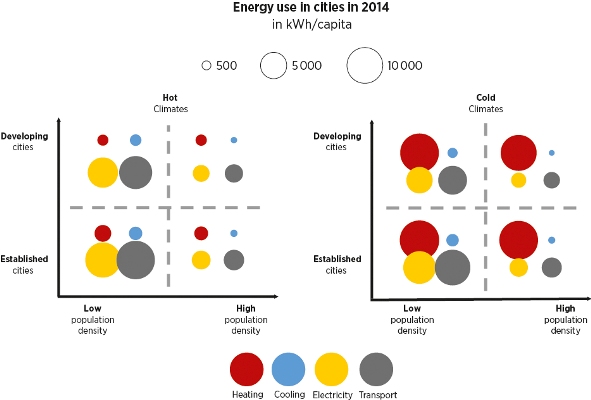Cities now have an unprecedented opportunity to transform and decarbonize their energy supply and use, says a new report from the International Renewable Energy Agency (IRENA).
The report, Renewable Energy in Cities, finds that there is no one-size fits all solution, and every city has massive potential to cost-effectively boost renewable energy use at the local level.
“Cities can play a transformative role in leading the world to a clean and sustainable energy future,” said Adnan Z. Amin, IRENA director-general.
“We have to rethink the entire urban energy landscape, which requires rigorous planning and holistic decision-making. Renewable energy, combined with energy efficiency, will power the future growth of cities. We must ensure this transition happens as soon as possible,” Amin added.
Electricity use varies widely across cities depending on climate conditions, population density and development stage. Likewise, energy use for transport varies greatly depending on urbanization models. Today, renewables supply only 20 percent of this energy, but much more is possible.
Accounting for 65 percent of global energy use and 70 percent of man-made carbon emissions, cities must play a key role in the transition to a low-carbon economy.
“By 2050, urban populations are expected to double, making urbanisation one of this century’s most transformative trends,” said Amin. “Now is the time to grow with renewables, leapfrog dirty technology, and create cities of the future that people are proud to call home.”
Renewable Energy in Cities was released today in support of the United Nations Sustainable Development Goals and the Habitat III Conference taking place in Quito, Ecuador.
Source: IRENA
editor@greentechlead.com

